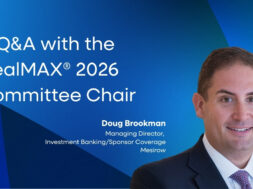Post-Transaction Integration: It’s All About the People
When it comes to ensuring a successful deal outcome, M&A experts say focusing on people must be the priority.

While there are plenty of factors to consider when ensuring a successful outcome of any M&A transaction, it’s people who company leaders and their private equity partners should place front-and-center, M&A experts say.
Speaking at ACG’s April InterGrowth panel “Managing Post-Transaction Integration: How to Achieve Cultural & Operational Success,” experts shared their experiences and advice for how to ensure M&A deals have positive outcomes.
The merging of two entities will undoubtedly ruffle some feathers, and human capital should be the focus of developing an effective post-transaction strategy. Yet according to Jennifer J. Fondrevay, founder and chief humanity officer at Day1 Ready, the people of a merged entity are rarely the focus of post-transaction due diligence, and are more often an afterthought.
Trust, she said, is “critical to business success.” Yet it can dissipate virtually overnight following a merger because the majority of post-transaction integration planning is focused elsewhere. And in trust’s absence, an “us-versus-them” mentality can emerge that threatens to derail post-transaction success.
The Human Element to Successful M&A
Business leaders often have preconceived notions of the trajectory of change, and how people react to it, explained Fondrevay. The assumption is that change equates to fear. But more often than not, it’s uncertainty to which people have an aversion—and M&A transactions involve a lot of uncertainty for the people involved.
Fondrevay pointed to the Kübler-Ross model of the Five Stages of Grief, which can be applied to talent in a post-transaction experience as they grieve the loss of familiarity, routines, or even their old jobs and workflows.
“They experience a loss of identity, because the company is changing, and they don’t know what it’s changing into,” she explained of teams’ typical reactions to an M&A transaction involving their company. “So they experience the loss of a future that won’t be, or at least the future the way they thought it would be.”
Related content: Planning for a Successful Post-Merger Integration
In this context, making space for staff members to articulate their experiences and understand how they feel, and why, allows leadership to make talent feel supported through post-transaction shifts.
“Rather than only focusing on the change, because it absolutely has relevance, one of your opportunities is to look at how you can support your leadership and their teams in the workforce to navigate those stages of grief,” Fondrevay said.
Rather than only focusing on the change…one of your opportunities is to look at how you can support your leadership and their teams in the workforce to navigate those stages of grief.
Jennifer J. Fondrevay
Day1 Ready
Putting It Into Practice
Joining Fondrevay for the panel were Jared Konstanty, CEO at Signature Brands, and Brian Rassel, partner at Huron Capital, to discuss how they put some of these strategies into practice themselves.
For Huron, more than 240 successful acquisitions since 1999 have culminated in important lessons learned. The vast majority of those deals, noted Rassel, involved family- or founder-owned companies, which can create an especially challenging integration climate of change, uncertainty and fear.
Rassel highlighted several strategies that PE firms and the leadership of their acquisition targets can take to drive post-transaction success, all of which place people front-and-center.
They include identifying the “champions” within a company, those individuals who are willing to embrace change and guide their workplace peers ahead. His guidance also included explaining the “why” of every decision made to ensure that talent understands the motives behind those choices, as well as developing a culture of democratic consensus—especially in scenarios involving severance—to help every professional, even the so-called “resisters” to change, get to where they need to go.
Signature Brands comes to the table on the other end of the post-transaction experience. As Konstanty recalled, the company was struggling to grow with then-owner, Swiss-based The Hero Group, at the helm. In 2018, Traub Capital Partners acquired the company, a deal whose success relied upon each side of the transaction recognizing the “power of people,” he added.
Related content: Where People Fit into a Company’s Digital Transformation Journey
Konstanty highlighted several key steps Traub and Signature Brands took to turn the ship around.
They included putting trust at the center of strategy, investing in significant team coaching and development efforts, and ensuring that staff always had opportunities to engage and be heard by leadership. The result? Signature Brands’ net sales are the highest they have been since 2015.
“Once we had that trust going, and we had these clear approaches to how we were going to operate, we could lean into the uncomfortable,” Konstanty said about the post-transaction experience of prioritizing people. “If those relationships aren’t as strong as they need to be, you can’t really lean in. And when you lean in, that’s when you get, in our experience, the best possible outcomes.”


